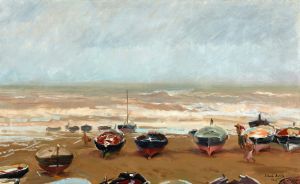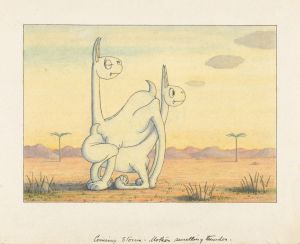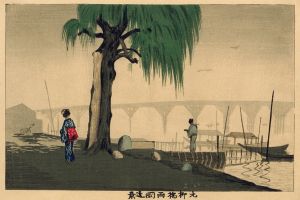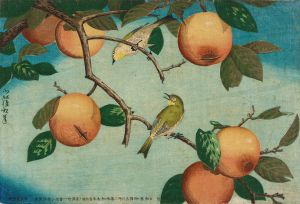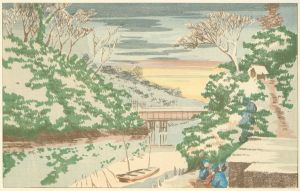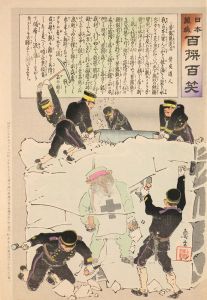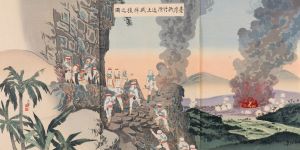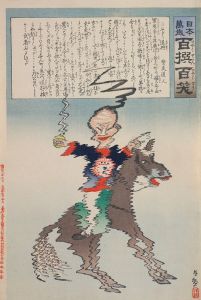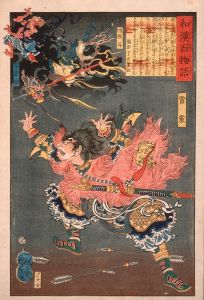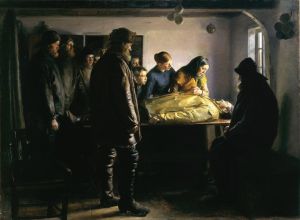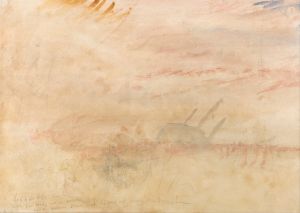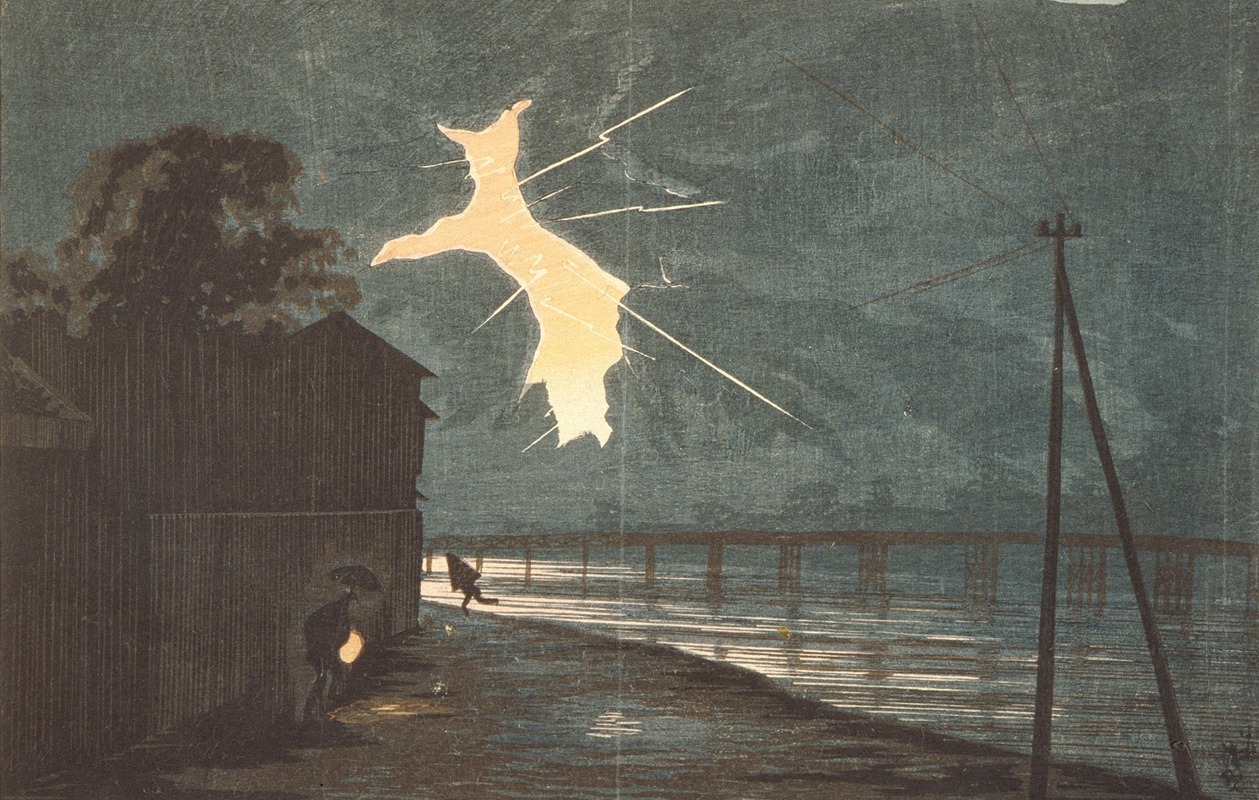
Thunder and Lightning at Oumaya Bridge
A hand-painted replica of Kobayashi Kiyochika’s masterpiece Thunder and Lightning at Oumaya Bridge, meticulously crafted by professional artists to capture the true essence of the original. Each piece is created with museum-quality canvas and rare mineral pigments, carefully painted by experienced artists with delicate brushstrokes and rich, layered colors to perfectly recreate the texture of the original artwork. Unlike machine-printed reproductions, this hand-painted version brings the painting to life, infused with the artist’s emotions and skill in every stroke. Whether for personal collection or home decoration, it instantly elevates the artistic atmosphere of any space.
"Thunder and Lightning at Oumaya Bridge" is a woodblock print created by the renowned Japanese artist Kobayashi Kiyochika. Kiyochika, born in 1847 and active during the Meiji period, is celebrated for his innovative approach to ukiyo-e, a genre of Japanese art that flourished from the 17th through the 19th centuries. His works often reflect the rapid modernization and Westernization of Japan during the Meiji era, capturing the dynamic changes in the urban landscape and society.
This particular print, "Thunder and Lightning at Oumaya Bridge," is part of Kiyochika's series that explores the effects of light and weather on the cityscape of Tokyo, then known as Edo. The series is notable for its atmospheric effects and the artist's skillful use of chiaroscuro, a technique that employs strong contrasts between light and dark to achieve a sense of volume and three-dimensionality. Kiyochika's work is often compared to Western Impressionism due to his focus on capturing transient moments and the play of light.
In "Thunder and Lightning at Oumaya Bridge," Kiyochika depicts a dramatic scene where a bolt of lightning illuminates the night sky over the Oumaya Bridge. The bridge itself is a significant structure, serving as a vital crossing point over one of Tokyo's many waterways. The print captures the momentary brilliance of the lightning, casting stark shadows and highlighting the silhouettes of figures on the bridge. This interplay of light and shadow is a hallmark of Kiyochika's style, demonstrating his mastery in conveying mood and atmosphere.
Kiyochika's work is characterized by a blend of traditional Japanese techniques and Western influences, reflecting the cultural exchange occurring during the Meiji period. His prints often feature elements of Western perspective and shading, which were relatively novel in Japanese art at the time. This fusion of styles is evident in "Thunder and Lightning at Oumaya Bridge," where the dramatic lighting and realistic depiction of the storm showcase Kiyochika's innovative approach.
The print is also significant for its depiction of urban life in Meiji-era Tokyo. The figures on the bridge, likely caught in the sudden storm, add a human element to the scene, emphasizing the everyday experiences of people living in a rapidly changing city. Kiyochika's attention to detail and his ability to capture the essence of a moment make his work a valuable historical record of this transformative period in Japanese history.
Kiyochika's prints, including "Thunder and Lightning at Oumaya Bridge," are highly regarded for their artistic merit and historical significance. They offer insight into the cultural and technological shifts of the Meiji era, as well as the personal vision of an artist navigating the intersection of tradition and modernity. Today, Kiyochika's works are held in high esteem and are part of major collections in museums around the world, appreciated for their unique perspective and technical excellence.





